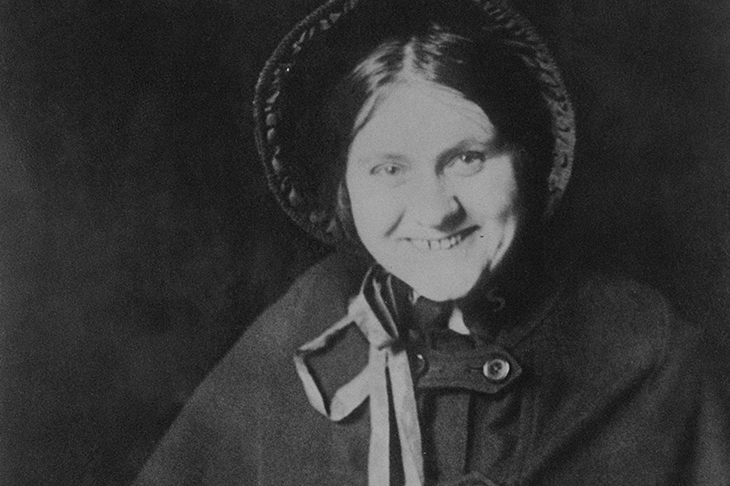Susannah Stapleton’s erudite but hugely entertaining debut is a true-life detective story about the quest for a true-life detective. A longstanding fan of Golden Age crime fiction, Stapleton is reading a 1930s Gladys Mitchell novel featuring the sleuth Mrs Bradley when she has a sudden thought: were there any non-fictional female sleuths around at the time? Reaching for her laptop, she soon finds a reference to Maud West, who billed herself as ‘London’s only lady detective’. And with that, writes Stapleton, in by no means the book’s only use of classic detective-story phrases, ‘The game was afoot’.
Her first stop is the Times archive, where she discovers an advert for Maud’s services from 1909 (‘Are you worried? If so, consult me!’) and another, from 1936, for a talk she gave at the ‘Exhibition of Women’s Progress’. But it’s when she explores less august publications that Stapleton really strikes gold — because Maud, it seems, was a bona fide tabloid celebrity. There were regular news-paper profiles, many affecting surprise that she didn’t wear a deer-stalker. Maud herself also wrote about her work in Pearson’s Weekly — a magazine, according to Stapleton, that virtually prided itself on its indifference to factual accuracy.
Even so, Maud’s columns — a dozen of which, happily, Stapleton scatters through the book — must have pushed this policy further than most. By her own account, Maud was a gun-toting mistress of disguise who pursued dastardly villains across the globe. In Rio, she overcame a gunman in a cocaine laboratory. In Paris, she rescued a young woman from a gigolo called the ‘Prince of Lovers’.
The trouble for Stapleton is that what she understatedly calls Maud’s ‘ambivalent relationship with the truth’ wasn’t restricted to magazine pieces. Almost all the claims she made about her life and work were whoppers, including the one about being London’s only female detective. In fact the city seems to have been crawling with them.
Luckily, Stapleton, a historian by trade, proves a pretty indefatigable sleuth herself. She consults every form of official record you can imagine — and plenty that you can’t — together with what appears to be every news-paper ever published anywhere. (One footnote impressively refers us to the 2 June 1924 issue of the Gundagai Independent and Pastoral, Agricultural and Mining Advocate.) There aren’t many biographies where a reviewer needs to avoid spoilers, but this, I’m afraid, is one of them — especially as Stapleton’s discoveries emerge in suspiciously shapely detective-story form. After several twists and ‘Of course! How could I have been so blind?’ moments, the full, suitably complicated truth about Maud’s life is revealed only at the end.
The good news is that in the meantime we get rollicking depictions of the rackety world in which Maud moved, even without Rio cocaine labs and the like. The way it comes across here, London’s hotels were staffed more or less exclusively by undercover detectives (many in Maud’s employ) on the lookout for adultery; and most country houses by undercover detectives (ditto) whose job was to catch thieving guests. There were lots of drugs about too, even once they were made illegal in 1920 — before which, Stapleton tells us in one of her many arresting asides, you could buy luxury cocaine-taking kits at Harrods.
Now and again, she does try too hard to fit Maud’s story into an approved narrative of plucky proto-feminist vs repressive male establishment — even though, as the rest of the book makes clear, it was far messier and more interesting than that. For one thing, Maud did some of her country-house spying on the suffragettes, whom she also accused of demanding protection money from Britain’s aristocrats. For another, as repressive male establishments go, the one after the first world war seems to have been rather a pushover.
In 1919, the Sex Disqualification (Removal) Act allowed women to enter professions from which they’d previously been barred. Not long afterwards, this was extended to the police — who, even when they had been all male, were, Maud reported, ‘always very good to me’. When the Efficiency Club was then set up to promote women in business, Stapleton manages to find one swivel-eyed male opponent, before being forced to admit that ‘the business world was, for the most part, supportive’. (In another arresting aside, we learn that one concern for professional women at the time was the use of over-thin models in fashion adverts.)
Likewise, she sometimes gets into an unnecessarily anxious tangle about Maud’s status as a goodie. Might the woman have been a wildly egotistical self-publicist whose own behaviour was often fairly dodgy? Or was she simply ‘bloody amazing’? In the end, Stapleton duly comes down in favour of the second verdict. My guess, though, is that most people who read this exhilarating eye-opener of a book will conclude that Maud was both.
The Adventures of Maud West, Lady Detective: Secrets and Lies in the Golden Age of Crime
Author: Susannah Stapleton
Publisher: Picador
Page count: 320
Price: £20






Comments